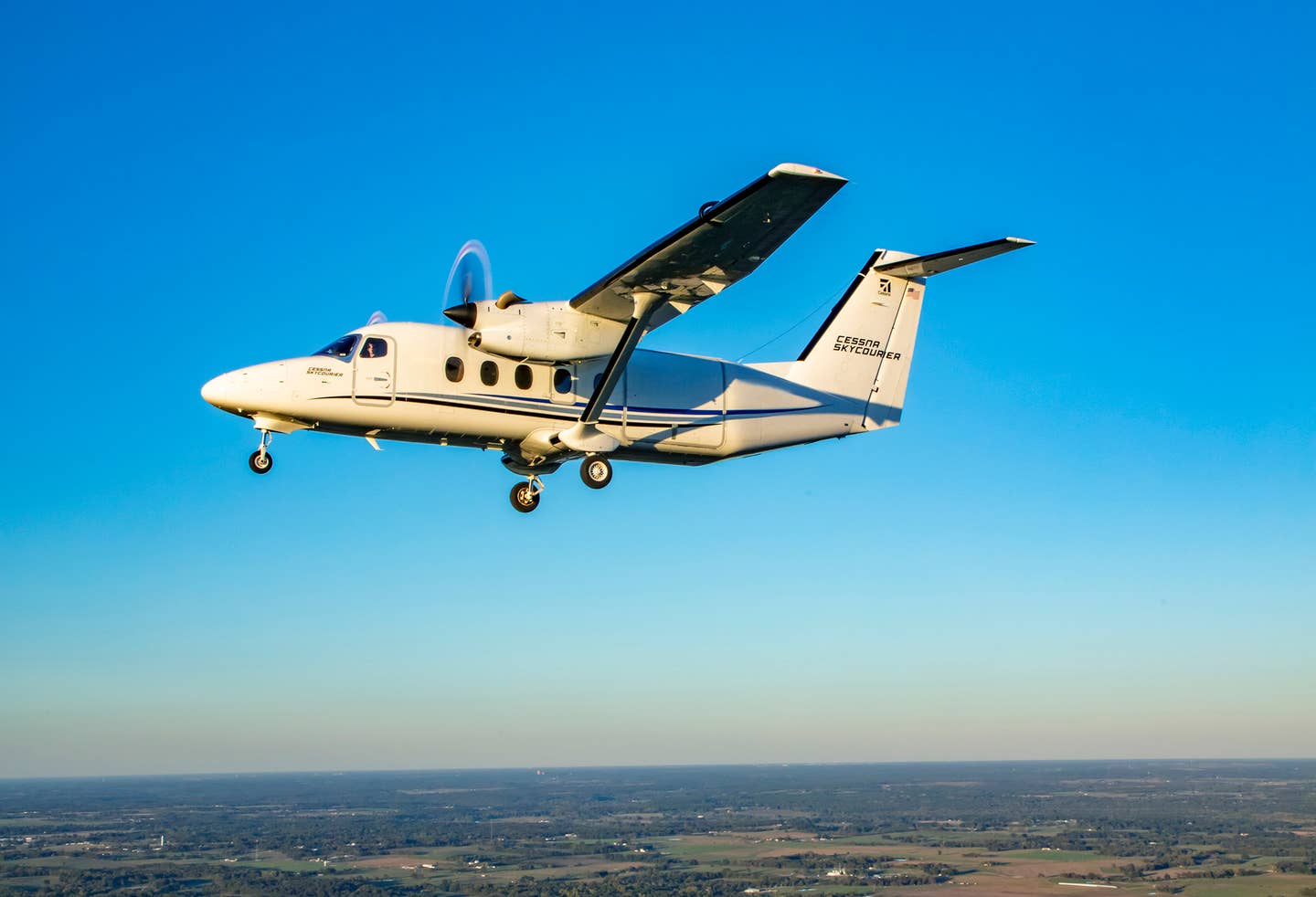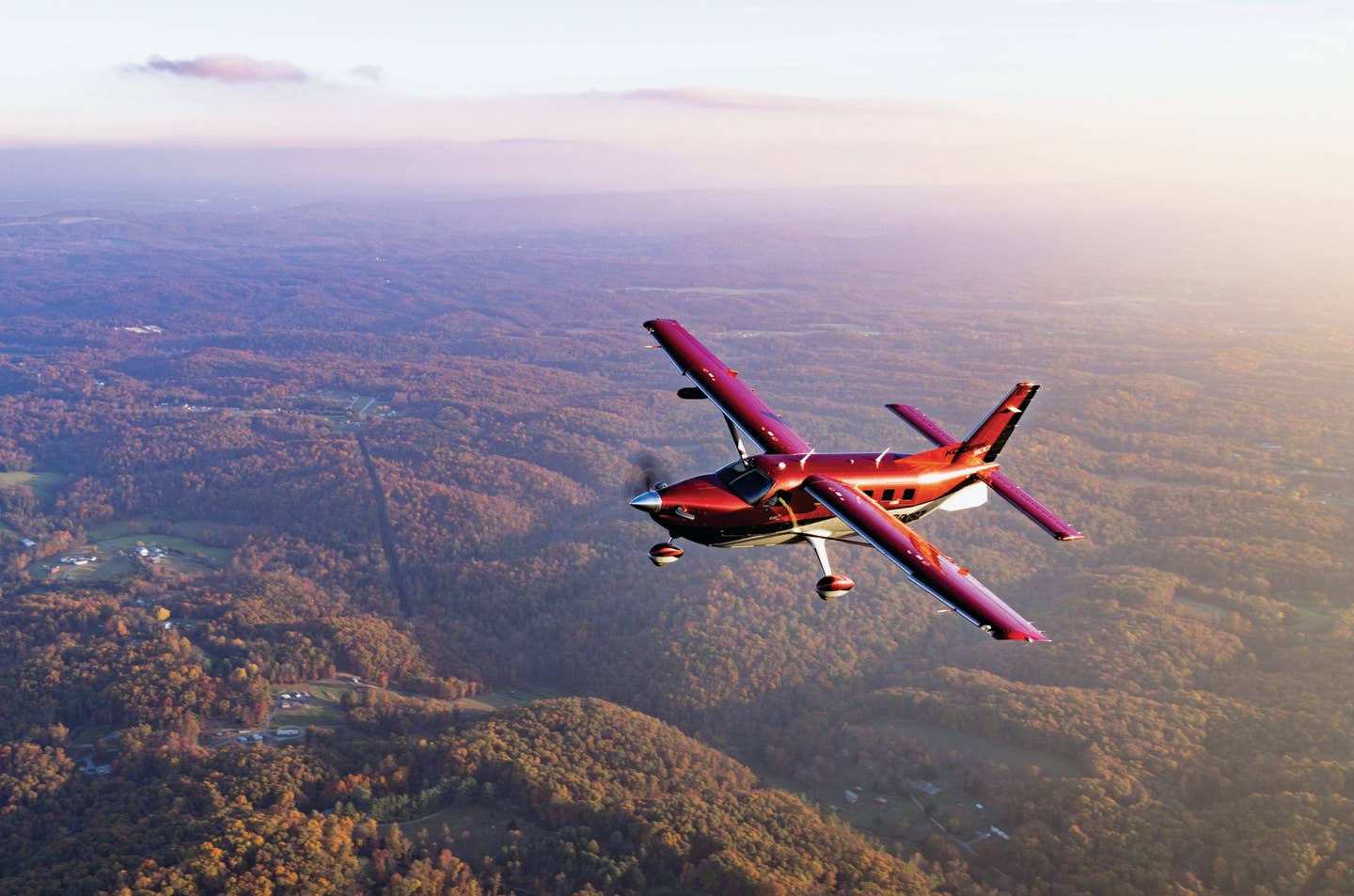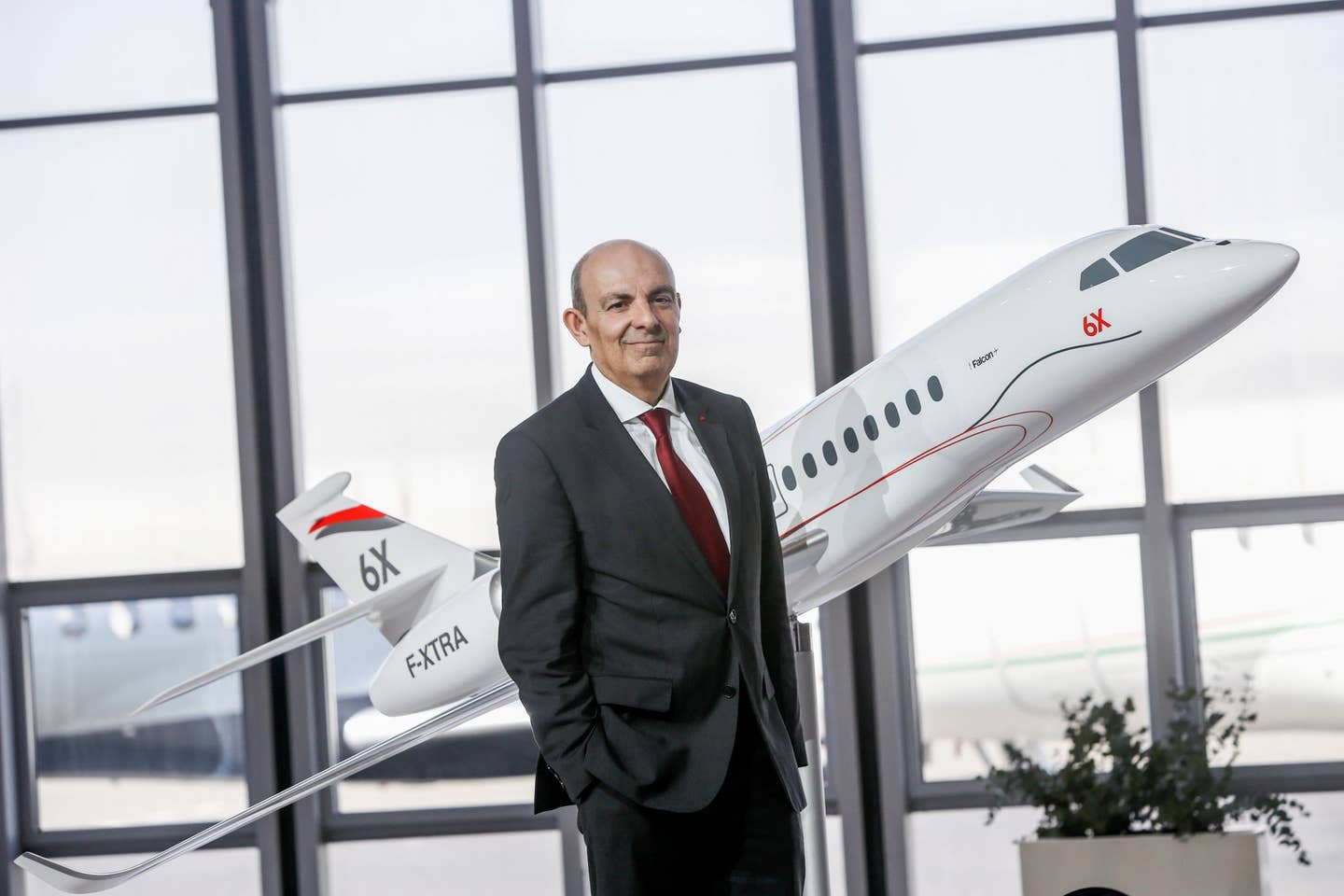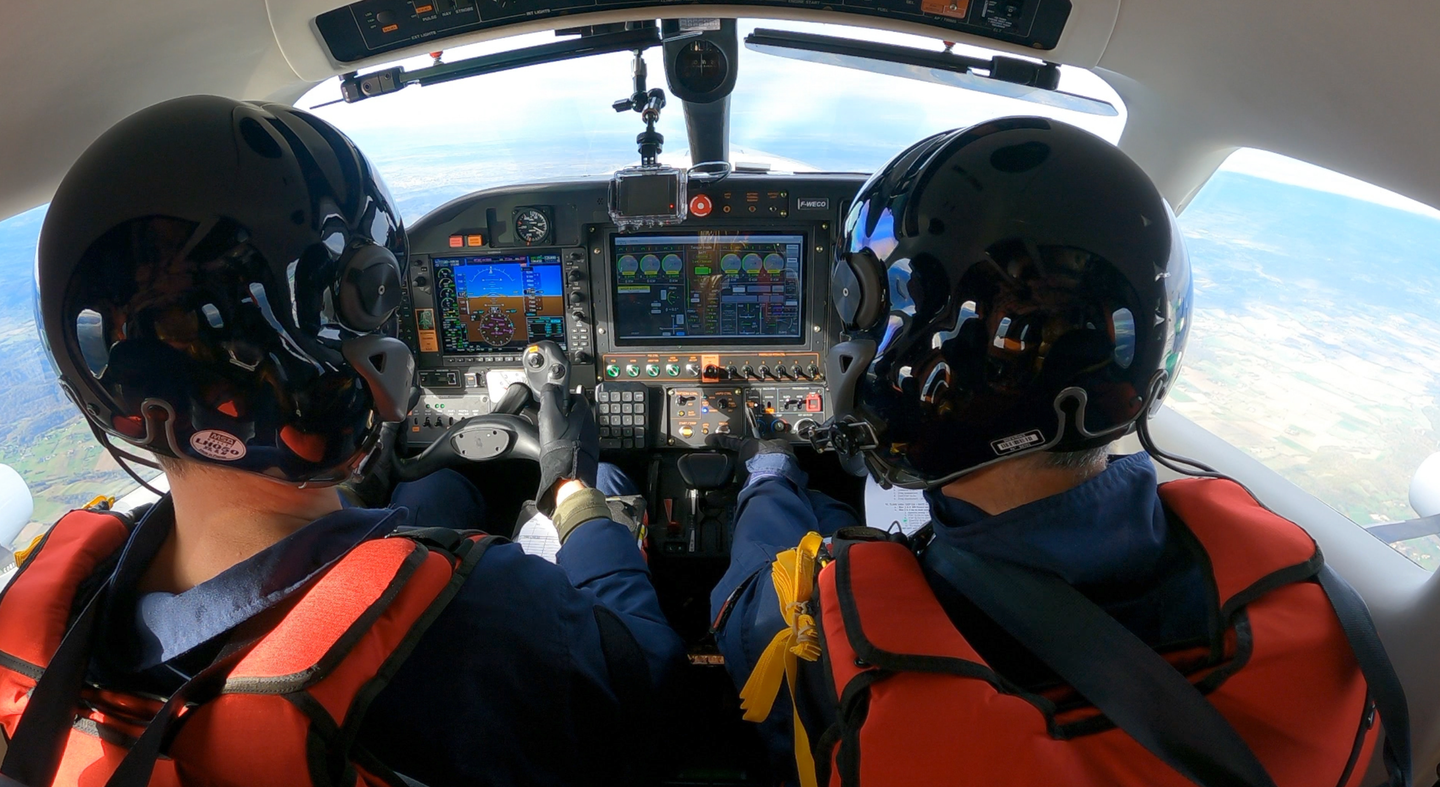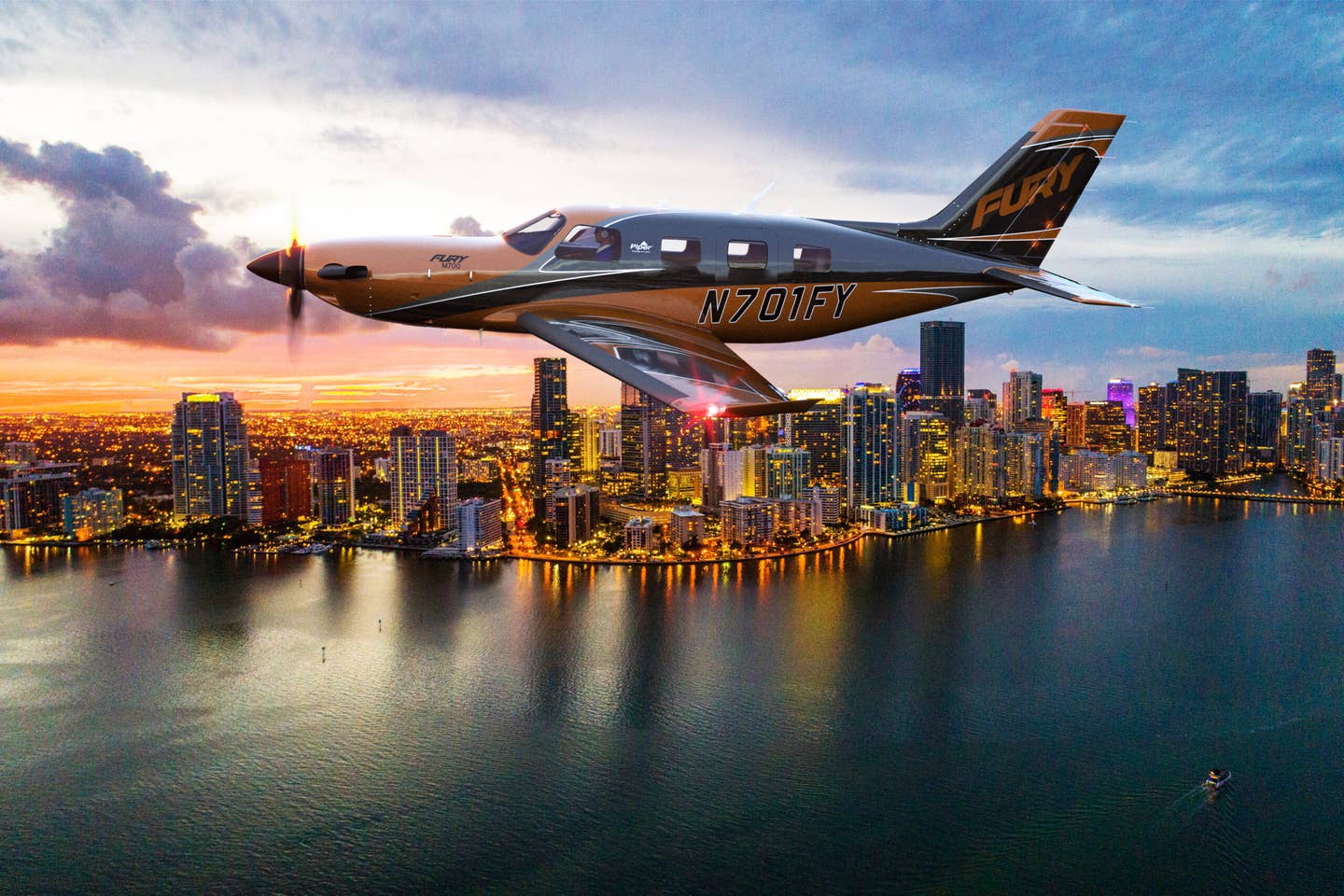EcoPulse Debut at Paris Highlights Progress on Sustainable Solutions
The distributed power demonstrated by CORAC-led collaboration between Daher, Safran, and Airbus emerges as a theme in the drive toward a market-ready airplane.
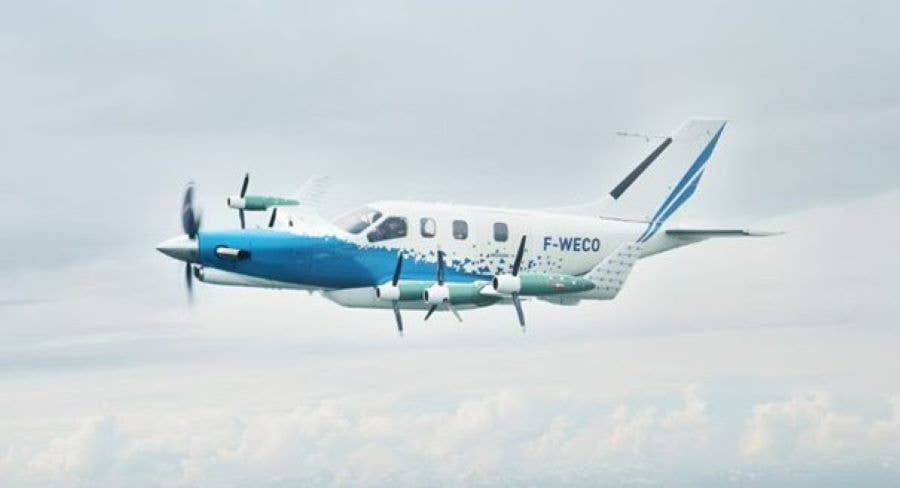
The EcoPulse technology demonstrator flew to Paris-Le Bourget Airport (LFPB) under traditional turboprop power in its aerodynamic proving phase prior to operating the six electric motors on its wings in flight. [Courtesy: Daher]
The concept of distributed power—thrust produced not from a single point on an airframe—began with the Wrights and their extremely light twin. When exploring the feasibility of utilizing electric motors—which tend to be lower output, lighter, and cooler in operation than their fossil-burning brethren—distributing the lift across the airframe from several points makes sense.
From a literal standpoint, many examples of this concept jostled for attention on the static display and in the halls at the Paris Air Show at Le Bourget this year. But the distributed power demonstrated by CORAC-supported collaboration between major aerospace OEMs Daher, Safran, and Airbus on the EcoPulse project has also emerged as a theme in the drive toward a market-ready airplane.
CORAC stands for “le Conseil pour la Recherche Aéronautique Civile,” or French Aeronautic Research Council, a focal group in France leading the charge toward decarbonization. EcoPulse is also funded by the DGAC (France’s civil aviation authority) through France Relance and NextGenerationEU. While governmental motivation is critical, what powers a project toward real sustainability solutions is the will to commit precious workforce and material resources at the corporate and teams level.
What Is EcoPulse?
From a distance, the silhouette of the EcoPulse belies its basis on the Daher TBM airframe. Already an efficient utilizer of the Pratt & Whitney PT6-series turboprop engine, the TBM 900 formed a shell for the project with well-understood aerodynamics and serviceability as a baseline for the effort.
Daher was already “in anticipation” of the current climate on decarbonization for some time, according to head of aircraft design Christophe Robin, lead for the EcoPulse project for Daher’s team, with chief technology officer Pascal Laguerre.
“We started to think about that five years ago, and at that time it was not a very common word—decarbonization—so we said we need to do something,” said Robin in a walkaround the airplane with FLYING. “But let’s make something very concrete. No PowerPoint, no things like that. Let’s build an aircraft—and let’s build an aircraft with partners, with people that have the technology that we don’t have as an aircraft manufacturer. Above 28 volts of electricity, we don’t know too much.
“The goal is not to modify a TBM. The goal is to put as much technology as possible on an aircraft, to make something which is probably completely stupid from a product point of view, but which makes sense from a technology point of view.”
From this, the consortium would learn and capture immense amounts of data from which to draw conclusions that could inform a marketable initial product offering.
The project was announced at Le Bourget in 2019—the last occasion of the Paris Air Show—and work has taken place since then. Safran produced the six electric ENGINeUS motors (at 80 kwh each) mounted with e-Propellers distributed along the wings, three on each side. The props have two positions, one for normal flight, and one feathered. The propulsion system takes its power from two sources: a turbogenerator—an electricity generator powered by a gas-burning turbine—from Safran and a battery pack supplied by Airbus. The Power Distribution and Rectifier Unit protects the high-voltage network and distributes the available electrical power along with the high-voltage harnesses (all from Safran). That’s important, because the system manages a total capacity of 800 volts—a leap in electrical system management unprecedented in this type of vehicle.
“Hybridization and electrification are key to the aerospace sector’s decarbonization journey,” said Sabine Klauke, CTO at Airbus. “With EcoPulse, we learned a lot from developing the high-power battery pack entirely, from the monitoring system to the thermal runaway and short-circuit tests. Some of these key learnings are already applied in several of our demonstrators with the common ambition to lower emissions. We are now all eager to see this technology flying and continue to progress on our electrification roadmap.”
First Flight: Normal Power
The EcoPulse took its maiden flight in 2022 using its stock PT6A engine before the electrical system was operational. Ground and flight testing thus far in 2023—including 27 hours in flight—have gone toward proving the aerodynamics of the engine configuration along with the operability of its systems. The flight deck features a Garmin G1000 standard on the airframe, with additional avionics to support the new systems. The consortium looks forward to the first flight engaging the electric motors later this summer.
“The demonstrator has so far amassed around 27 hours of flight time with the electric propellers feathered,” said Laguerre of Daher. “Flight tests of the hybrid-electric powertrain are due to begin later this summer. We are going to learn a lot. From this demonstration program, we plan to develop our future product roadmap and basically spec the hybrid aircraft we intend to produce by the end of our five-year plan. We expect by the end of 2027 to be able to offer our first hybrid aircraft to the market.”
Eric Dalbiès, executive vice president of strategy and CTO for Safran, said: “After endurance ground test campaign for the e-Propellers, the first hybrid-electric flight with the six e-Propellers activated will be an important milestone for our technology roadmap as Safran’s objective is to position itself as the leader in future hybrid and all-electric aircraft systems.”
“For us this project is a sweet sport,” Dalbiès added in the press briefing. “Whatever happens in the future, about the maturity of this kind of system, it’s really answering the goals of research and technology projects, to make a representative demonstration—full scale—of the complete system.”

Subscribe to Our Newsletter
Get the latest FLYING stories delivered directly to your inbox


